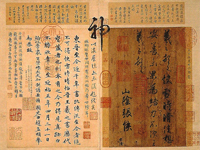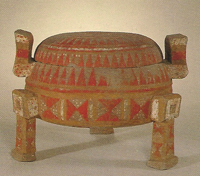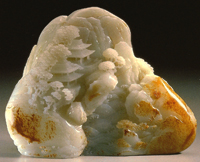WEI YANG on CHINESE ART
Dr. Wei Yang discusses connoisseurship and valuation of Chinese art from the perspective of a trained Chinese art historian (Ph.D. in Chinese art) and a practicing Accredited Senior Appraiser (ASA) in Asian Art and Appraisal Review and Management (ARM).
Dr. Yang has been serving as Chinese art expert witness, expert consultant, expert appraiser, appraisal reviewer for litigation since 2015.
My Goals
This website is designed for Chinese art connoisseurs and collectors, appraisers and professionals, students and teachers who wish to develop expertise in Chinese art. In my career as an educator and for the past eighteen years as an appraiser and Chinese art expert witness, I have often been asked how to appreciate Chinese art and aesthetics and how to develop competence in appraising Chinese art.
I plan to write four books on Chinese art to demonstrate by examples how to evaluate Chinese fine arts (Part I and Part II), ceramics and jade. My books are intended to educate readers about the essentials of Chinese art, introduce key Chinese artists and masterworks, and provide practical advice for developing expertise in appraising Chinese art. All the books offer the basics of Chinese art, introduce aesthetics and standards of judgment, and provide practical advice on appraisal practice.
My first book on premodern Chinese painting and calligraphy prior to 1911 (Part I: Vols 1-2) was published in 2022. I am currently completing three more books: Chinese painting and calligraphy of the 20th century (Part II: Vol. 3), Chinese ceramics (completed) and Chinese Jade (in progress).
My new book, Wei Yang's Guide to Chinese Painting and Calligraphy (Tianjin: Nankai University Press, 2022) is Available at: AMAZON

THIS BOOK INCLUDES:
• Comprehensive reference for Chinese painting and calligraphy prior to 1911
• Focus on connoisseurship, art criticism, appraisal and market trends
• Entries on 293 painters, including biographies, stylistic analysis, and market performance
• Basic introduction to Chinese painting and calligraphy
• Analysis of significant artists and their works
• Guidelines for valuation and appraisal of Chinese art
• Chapters on materials, brushstrokes, style, and written words on painting
• Insights on dating, traditional sources, and connoisseurship
• Information on artists’ signatures, seals, and recent sales data
• 600 illustrations, 8 tables, and hundreds of examples of signatures and seals
• Comprehensive bibliography and indexes
• Authored by scholar and Accredited Senior Appraiser in Asian Art
Topics discussed in this book may not answer every question you have about the appraisal of Chinese painting and calligraphy, they will certainly form a strong foundation for you to sharpen your judgment of the quality and authenticity of a Chinese fine art. Slowly with confidence, and by practice, you will build up your new expertise in classical Chinese painting and calligraphy. You will be able to apply your newly minted skills with competence to the appraisal of modern and contemporary Chinese art since the classical and the modern speak the same visual language.
By learning from the best or guided by a practicing Chinese art historian appraiser and expert witness, you will master a high level of artistic sensitivity to the visual aesthetics of Chinese painting and calligraphy. You will possess the core Knowledge of Chinese visual culture and artistic practice, a set of unmatched skills to ornament your professional integrity and objective evaluation with credibility, accuracy and relevance, the backbone of your expert opinions.






